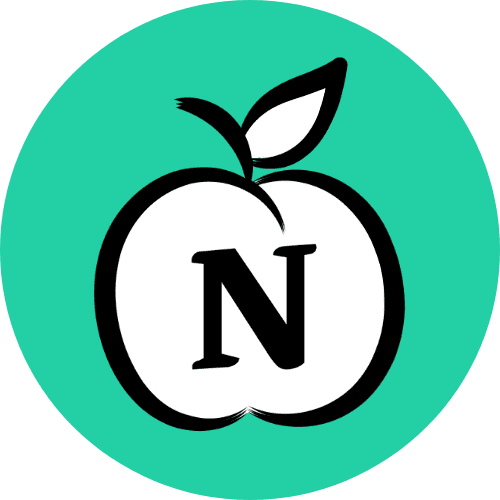Modern Teaching Handbook
Master modern education with the all-in-one resource for educators. Get your free copy now!
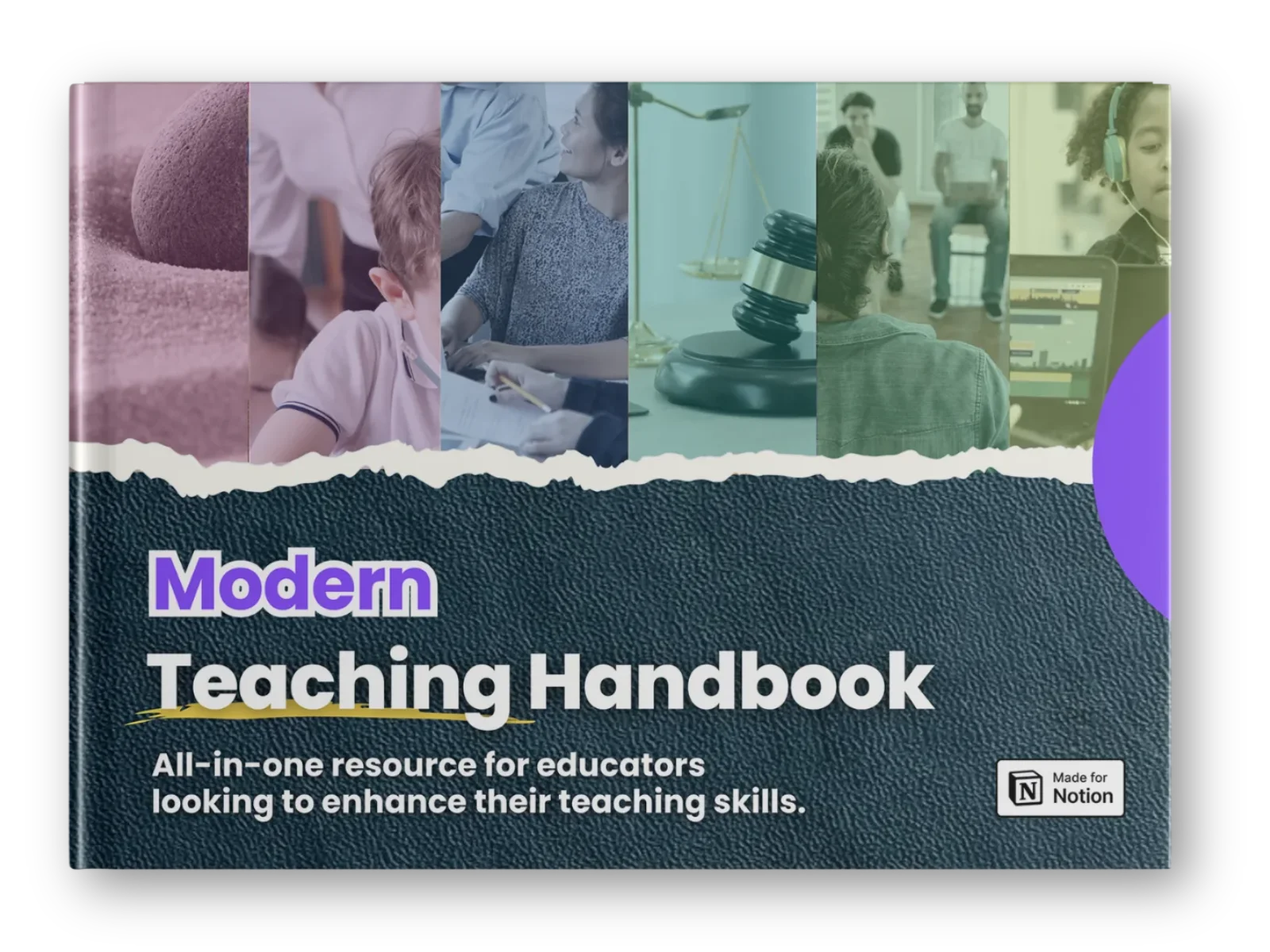
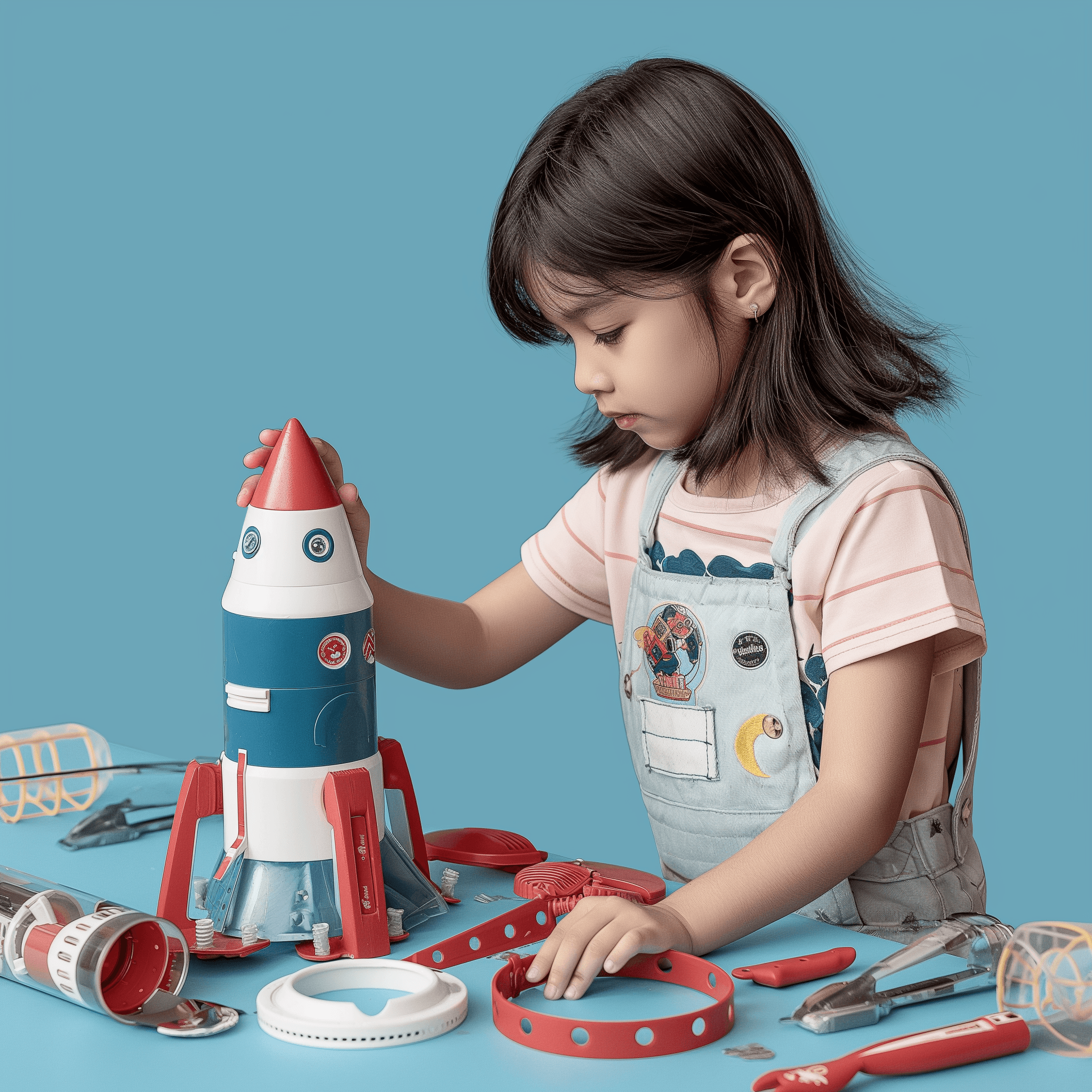

Project-Based Learning: Complete Implementation Guide
Project-Based Learning: Complete Implementation Guide
Project-Based Learning: Complete Implementation Guide

Article by
Milo
ESL Content Coordinator & Educator
ESL Content Coordinator & Educator
All Posts
Imagine sitting in a classroom, tasked not with memorizing facts for a test, but with solving a real-world problem. Perhaps you’re designing a sustainable garden for your school or creating a podcast to document local history. Sounds fun, right? That’s exactly what Project-Based Learning (PBL) is all about! Instead of focusing on traditional rote learning, PBL puts students in the driver’s seat of their education by engaging them in meaningful, hands-on projects.
Imagine sitting in a classroom, tasked not with memorizing facts for a test, but with solving a real-world problem. Perhaps you’re designing a sustainable garden for your school or creating a podcast to document local history. Sounds fun, right? That’s exactly what Project-Based Learning (PBL) is all about! Instead of focusing on traditional rote learning, PBL puts students in the driver’s seat of their education by engaging them in meaningful, hands-on projects.
Modern Teaching Handbook
Master modern education with the all-in-one resource for educators. Get your free copy now!

Modern Teaching Handbook
Master modern education with the all-in-one resource for educators. Get your free copy now!

Modern Teaching Handbook
Master modern education with the all-in-one resource for educators. Get your free copy now!

Introduction to Project-Based Learning
What Is Project-Based Learning?
At its core, Project-Based Learning is an educational approach where students learn by actively exploring real-world challenges and questions. They work on projects that are not hypothetical but grounded in authentic problems, producing a tangible result or product at the end. Think of it as learning by doing, with deeply rooted connections to real-world applications.
For instance, rather than reading about clean energy in textbooks, PBL encourages students to design a small solar-powered device or draft a proposal for improving energy efficiency in their school. The idea is to blend academic knowledge with critical thinking, creativity, and collaboration to tackle practical issues.
Why Has PBL Become So Popular?
Education as we know it is changing. Employers today value skills like teamwork, problem-solving, and adaptability just as much (if not more) than memorized knowledge. Project-Based Learning naturally emphasizes these skills. Plus, let’s admit it—students are way more engaged when they’re working on something they care about!
A great example is a high school math class learning geometry through the construction of model bridges. Instead of simply solving equations, students measure, calculate, and evaluate structural integrity—all while applying math concepts to solve real problems. And surprise, they might even find math... fun?
What Does a PBL Classroom Look Like?
A PBL classroom might look a little chaotic at first glance—but that’s usually a good sign! You’ll see students huddled in groups, brainstorming, building prototypes, or even debating solutions. The teacher isn't lecturing at the front of the room. Instead, they’re acting as a guide, moving from group to group to facilitate learning.
Here’s what you'll commonly observe:
Collaboration: Teams of students sharing ideas and distributing tasks.
Inquiry: Lots of questions flying around—and not just from the teacher!
Creativity: Students using tools, technology, and their imagination to solve problems.
Presentation: Everyone is prepping to showcase their work, whether through posters, digital presentations, or physical projects.
Breaking Misconceptions About PBL
“But wait,” you might ask, “isn’t this just group work rebranded?” Not at all. While teamwork is often involved, PBL is far more structured and purposeful. Everyone in a PBL classroom is working toward a concrete goal, driven by a guiding question or challenge.
Another common myth? That PBL is just for artsy or tech-savvy students. In truth, PBL works beautifully across all subjects—from science and technology to literature and history. For example, Shakespeare's plays could come to life through a student-led production or a modern reinterpretation in short films.
A Taste of What’s Ahead
Ready to dive deeper? In the next sections, we’ll explore why PBL is such a game-changer and how you can implement it step-by-step. Spoiler alert: it’s not just about projects—it’s about fostering skills that stick with students for life! Keep reading to learn about the many benefits of this dynamic teaching approach.

Benefits of Project-Based Learning
Have you ever tackled a hands-on project and realized you learned so much in the process—without even noticing? That’s exactly the magic of project-based learning (PBL). Unlike traditional teaching methods where students memorize facts, PBL puts the focus on doing. By actively engaging in meaningful projects, students gain more than just knowledge. Let’s dive into the benefits of PBL and see why it’s changing classrooms for the better!
Promotes Deeper Understanding
Facts are great, but truly understanding something takes more than just memorization. PBL lets students explore topics in-depth through real-world applications. For instance, instead of learning math equations in isolation, students might design a budget for a charity event or build a model bridge. By working through a project, they see how abstract concepts fit into everyday life.
This hands-on approach also encourages students to ask why and _how_—two questions that are at the heart of genuine learning.
Builds Practical, Real-World Skills
Let’s face it: knowing the capital of France is helpful, but knowing how to collaborate with others or solve complex problems is invaluable. PBL emphasizes skills that go beyond the classroom, including:
Critical thinking: Finding solutions to problems with no clear "right answer."
Collaboration: Working as part of a team, even when disagreements arise.
Time management: Juggling deadlines while keeping quality top-notch.
Communication: Presenting ideas clearly, whether through writing, speaking, or visuals.
For example, a team project to create an app doesn’t just teach coding—it forces students to work together under pressure and present their final product effectively. Sounds like something they’ll need in the real world, right?
Boosts Engagement and Motivation
Have you ever been so engrossed in a task that you lost track of time? That’s the kind of engagement PBL fosters. By giving students meaningful, real-world challenges, PBL makes learning fun and relevant. Suddenly, school isn’t just about grades; it’s about solving problems that actually matter.
For example:
Designing a water filtration system to help areas in crisis.
Building bee gardens to support local ecosystems.
Investigating the impact of a recent law on their community.
Such projects aren’t just engaging—they also let students see the impact of their work, which naturally fuels motivation.
Encourages Creativity and Innovation
PBL celebrates creative thinking. Because projects often don’t have a single correct answer, students are free to brainstorm, test, and explore different approaches. They might paint murals to communicate history lessons or write scripts to dramatize scientific concepts.
The beauty here? They learn it’s okay to fail. In fact, failure often sparks the best ideas. By the end of a project, students gain not only knowledge but confidence in their ability to innovate.
Builds Independence and Responsibility
PBL shifts the focus from the teacher to the student. While educators guide the process, students take ownership of their learning. They decide how to structure their projects, tackle obstacles, and manage their resources.
Imagine this: A group of students runs a mock city council debate addressing local environmental concerns. They’re responsible for researching policies, assigning roles, and preparing arguments. The teacher acts as a mentor, but the success of the project ultimately lies in the students’ hands. This level of independence is empowering—and prepares them to be self-motivated learners in the future.
Makes Learning Memorable
Remember those boring lectures you zoned out during in school? Probably not. But PBL flips the script. Because students are deeply involved in their learning, they retain the knowledge longer. Plus, the skills and experiences they gain stick with them far beyond a final exam.
Think about it: A student who creates a campaign to raise awareness about food waste isn’t going to forget it anytime soon. And neither will the lessons they learned along the way!
From hands-on exploration to life-changing skills, the benefits of project-based learning are undeniable. Best of all? It makes learning exciting—not just for students, but for educators as well. Ready to learn how to implement it? Let’s roll up our sleeves and dive into the next steps!
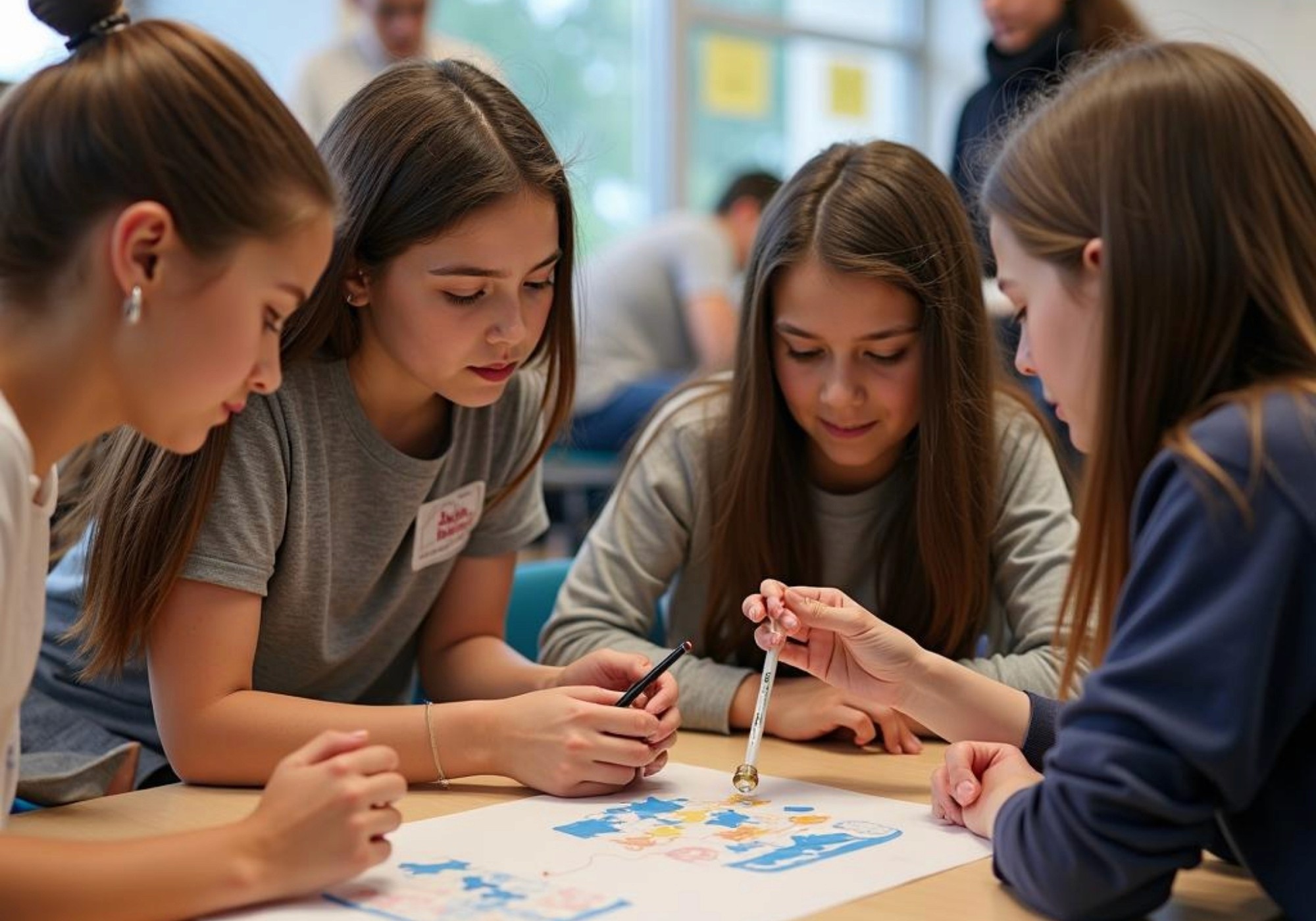
Key Principles of Project-Based Learning
Imagine walking into a classroom where students aren't quietly copying notes or staring at textbooks. Instead, they're building a model of a sustainable city, filming a documentary about local history, or designing a website to solve a real-world problem. That’s project-based learning (PBL) in action! But what makes PBL truly effective? It all starts with a few foundational principles.
1. Centered Around Real-World Problems
PBL doesn’t ask students to memorize facts for a test. Instead, it challenges them to tackle real-world problems or questions that actually matter. When a project feels relevant, students naturally become more engaged.
Example: Rather than studying abstract math concepts, students might be tasked with planning a new community park, using geometry to design layouts and calculate areas.
Why It Works: This real-world connection ignites curiosity and encourages students to see the value in what they're learning. Suddenly, those math equations aren’t just numbers—they’re tools for creating something meaningful.
2. Emphasis on Inquiry, Not Answers
In PBL, it’s not about giving students the "right" answer; it’s about teaching them to ask the right questions. Inquiry is at the heart of every project. Students explore, research, and think critically to arrive at solutions.
Tips for Teachers:
Start with an open-ended driving question (e.g., "How can we reduce food waste in our school cafeteria?").
Allow students to investigate and draw conclusions rather than handing them a step-by-step guide.
This principle fosters creativity, independent thinking, and deeper understanding. Plus, it mirrors how problem-solving happens in the real world—you rarely get a tidy, pre-packaged solution!
3. Collaboration is Key
Let’s be honest—teamwork doesn’t always come naturally, and anyone who’s struggled through a group project knows this. But in PBL, collaboration is a superpower. Students learn to divide tasks, share ideas, and navigate conflicts, all while working toward a common goal.
Why This Matters: Employers consistently rank teamwork as one of the most important skills for future professionals. PBL gives students a head start by building these skills early.
Fun Fact: Research shows that learning in cooperative groups improves both academic achievement and social-emotional development.
Remember—magic isn’t made from perfect teams; it’s made from learning how to work together, even when personalities clash or ideas differ.
4. Reflection Happens at Every Step
Ever hear the saying, "You don’t learn from experiences; you learn from reflecting on them"? PBL takes this to heart. Students are encouraged to pause, reflect, and revise their work throughout the process.
How It Works:
After each milestone, students review what they’ve done. Did their solution work? What could they do differently?
Teachers guide this reflection by asking probing questions like, “What challenges did you face?” or “How did your thinking evolve?”
Reflection transforms mistakes into learning opportunities. It also helps students develop a growth mindset, where they value progress over perfection.
5. Public Products Build Accountability
One of the coolest aspects of PBL? Students don’t just turn their projects in—they share them with the world. Whether it’s presenting to peers, parents, or even community leaders, this public aspect adds a layer of accountability.
Why It’s Powerful: Knowing their work will be seen sparks intrinsic motivation. Plus, presenting to an authentic audience makes students take their work seriously, and it builds confidence.
Example: A group designing an app might pitch their idea to local business owners, receiving feedback that feels very "real-world."
At its core, PBL flips the traditional teaching model on its head. Learning becomes active, messy, and deeply engaging. When students tackle real problems, foster inquiry, collaborate, reflect, and share their work with others, they don’t just learn content—they develop skills that prepare them for life.
And here’s the secret sauce: these principles aren’t just academic buzzwords. They’re what make students say, “Wow, this is the coolest thing I’ve ever done!” Ready to dive into the world of PBL yourself? Keep these principles close, and let the creativity flow!
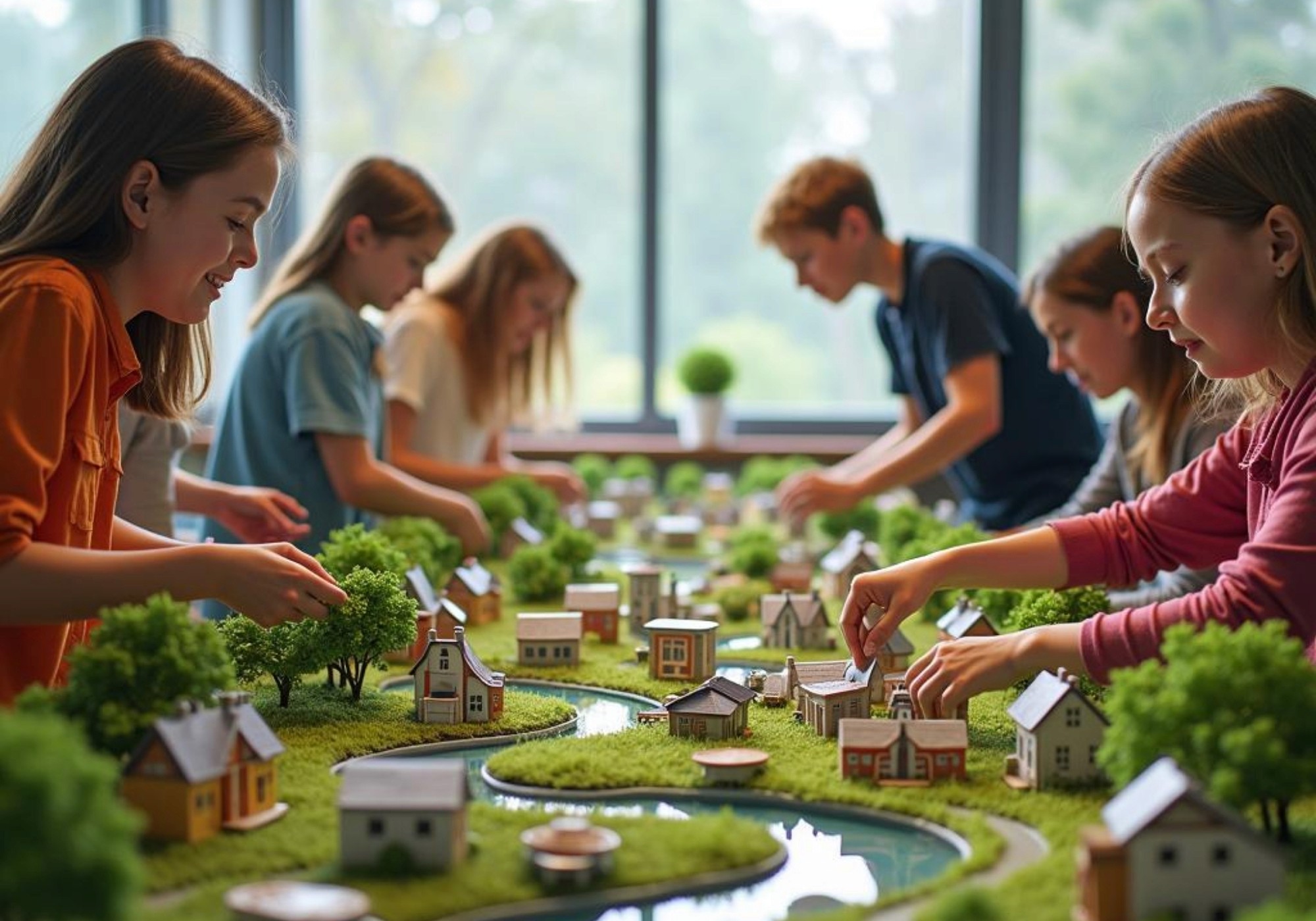
Steps to Implement Project-Based Learning
Imagine this: Your students are buzzing with excitement, collaborating on a project that ties math, writing, and science together, while addressing a real-world challenge. That’s the magic of project-based learning (PBL). But how do you actually make it happen—without feeling overwhelmed? Don’t worry; here’s a step-by-step breakdown to help you implement PBL like a pro.
1. Identify a Driving Question or Problem
Every great PBL activity starts with a compelling, open-ended question or real-world problem. Think of it as the anchor for the entire project. It should be challenging, relevant, and spark curiosity.
Make it meaningful: Instead of “How do we reduce our school’s energy use?” try something engaging like “Can we make our school the greenest in the district?”
Connect to real life: For example, a driving question for younger students might be, "How can we design a playground that everyone can enjoy?” For older students, it could be, "What solutions could help reduce homelessness in our city?"
Pro tip: Test your question by asking yourself, “Would I want to tackle this?”
2. Plan with Purpose
Once you have your driving question, it’s time to map out the journey. A detailed plan ensures students stay on track while giving them the freedom to explore creatively.
Break down the project: Divide it into manageable chunks or milestones to make the process less overwhelming.
Outline goals: Determine what skills and concepts you want students to master by the end (e.g., teamwork, critical thinking, or understanding ecosystems).
Pick your resources: Will students need access to certain books, internet tools, or even community members? Get these ready in advance.
3. Launch with a Hook
PBL works best when students are genuinely excited to dive in! Kick things off with a memorable activity or hook to introduce the project.
Show, don’t tell: Share a video, bring in a guest speaker, or organize a field trip to fire up curiosity. For example, showing a documentary clip on ocean pollution can ignite passion for tackling environmental problems.
Make it interactive: Pose a hands-on challenge to spark excitement. If designing a garden, bring in unusual plants or gardening tools for students to explore.
4. Facilitate Collaboration and Exploration
Now it’s time for students to roll up their sleeves. While group work is central to PBL, guiding them effectively is equally important.
Create diverse teams: Mix skills and personalities to promote collaboration. Let students assign roles like team leader, researcher, or designer.
Encourage research: Students should dive into books, consult experts, or maybe even conduct surveys. For example, middle schoolers designing a community park might interview local residents for ideas.
Step back (but stay close): Your role becomes more of a guide than a lecturer. Monitor groups, answer questions, and challenge them to dive deeper, but avoid micromanaging.
5. Emphasize Reflection Throughout
Reflection isn’t just the cherry on top—it’s baked into the PBL process. It helps students assess their progress and think critically about their learning.
Check in regularly: Hold quick “stand-up meetings” where groups update the class on their progress.
Ask reflection questions: What’s working? What’s challenging? What’s surprising you so far? These kinds of questions keep students thinking dynamically.
6. Share and Celebrate the Final Product
The big moment is here: showcasing the results! This phase of PBL is all about sharing the outcome of students' hard work with a genuine audience.
Go beyond the classroom: Instead of presenting strictly to their peers, invite parents, community members, or even post presentations on a school blog or social media.
Use creative formats: Students might write a report, build a prototype, create a video, host a fundraiser, or perform a skit. For example, high schoolers addressing local hunger could host a food drive as part of their project.
Project-based learning may seem like a challenge to plan, but following these key steps turns it into a rewarding adventure for both students and teachers. So, are you ready to watch your classroom come alive with creativity and purpose? Trust me—it’s worth it. Now, let’s tackle those potential hurdles (you’ve got this!).
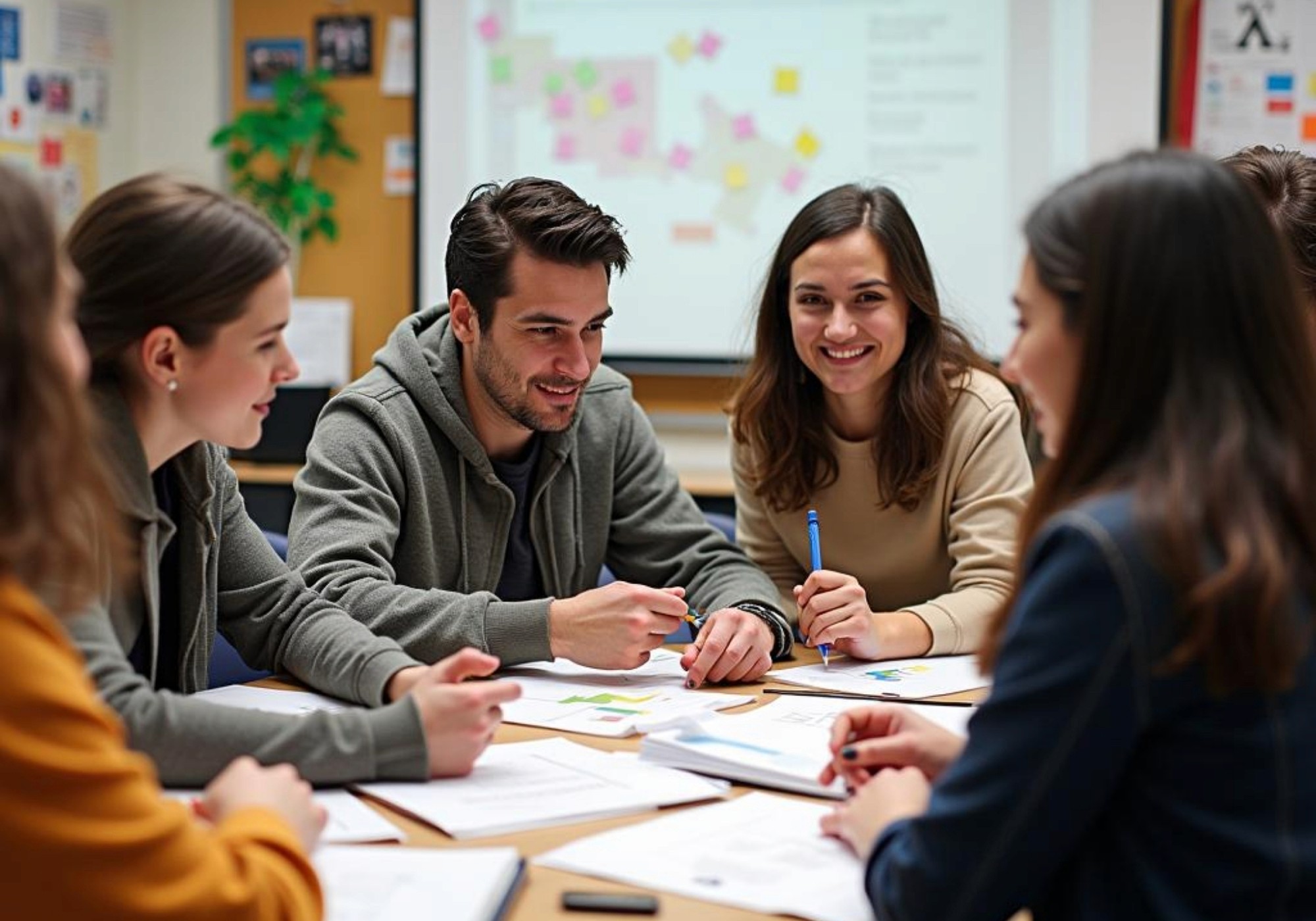
Assessment Strategies for Project-Based Learning
Imagine a classroom where students are building a model of their city’s downtown, crafting solutions to local traffic problems, or creating documentaries about climate change. Amazing, right? But then comes the million-dollar question: how do you actually assess all of this? Traditional quizzes or multiple-choice tests can’t capture the depth or creativity of these kinds of projects. That’s where tailored assessment strategies for Project-Based Learning (PBL) come into play.
Why PBL Assessment Is Different
In PBL, it’s not just about the final product—it’s about the journey. You’re assessing how students think, collaborate, and problem-solve along the way. This means your assessment needs to go beyond grading one right answer. It needs to capture skills like critical thinking, communication, and creativity.
The challenge? Balancing structure and flexibility. You want to evaluate their work rigorously but also celebrate the messy, nonlinear magic of real-world projects.
So let’s dive into how you can make this happen.
1. Use Rubrics for Clarity and Consistency
Rubrics are your best friend in PBL assessment. They set clear expectations for students while giving you a solid tool to evaluate their work fairly.
Here’s what a good PBL rubric should cover:
Content Mastery: Did the students demonstrate their understanding of key concepts?
Application of Knowledge: Were they able to apply what they learned to solve the problem?
Collaboration: How well did they work as a team?
Creativity & Innovation: Did their solution show originality?
Presentation Skills: How effectively did they communicate their ideas?
For example, if students are designing a water filtration system, your rubric might score them on how well they apply principles of science, their teamwork skills during the prototyping phase, and their ability to present their findings to an audience.
2. Incorporate Self-Assessment
Here’s a secret: students are often their own toughest critics. Self-assessment encourages them to reflect on their work and learning process.
Ask questions like:
What went well during your project?
What challenges did you face, and how did you overcome them?
If you could do something differently, what would it be?
Pro tip: Combine self-assessment with a reflection journal. Journals are a great way for students to track their progress, brainstorm ideas, and share insights as they go. You might be surprised at how much this step sharpens their thinking!
3. Highlight Peer Feedback
Ever noticed how students tend to listen to constructive criticism from their peers more than their teachers? Peer feedback is a fantastic way to involve students in the assessment process, and it can deepen collaboration.
Set clear ground rules—like being respectful and offering specific, actionable suggestions. For instance:
“I think your prototype is really creative, but have you considered testing it with different materials?”
Encourage students to give and receive peer feedback during checkpoints in the project timeline, not just at the end.
4. Focus on Process, Not Just Product
The beauty of PBL is that the process is just as important as the end result—maybe even more so. To assess this:
Hold regular check-ins to review progress.
Use formative assessments like group discussions, exit tickets, or quick presentations of ideas.
For example, if students are planning a community garden, you might evaluate their research, teamwork, and planning before they've even planted a single seed.
5. Celebrate Public Presentations
Here’s where the real world meets the classroom. A hallmark of PBL is asking students to present their findings to an authentic audience. This can be fellow classmates, parents, or even community members.
Assess on criteria like:
How well they explained their ideas.
Whether they addressed audience questions.
Their professionalism and engagement during the presentation.
Not only does this give students a taste of real-world accountability, but it also builds their confidence. Plus, it’s a great way for you to evaluate their learning in action.
Making Assessment Feel Empowering
The right PBL assessment strategies don’t just measure learning—they enhance it. By using tools like rubrics, self-assessments, and public presentations, you’ll make students feel more in control of their own growth.
And the next time you see their eyes light up while presenting a project or explaining how they cracked a tough problem, you’ll know you’re doing it right.
Now, ready to tackle those challenges that come with implementing PBL? Stay tuned—they’re not as scary as they seem!
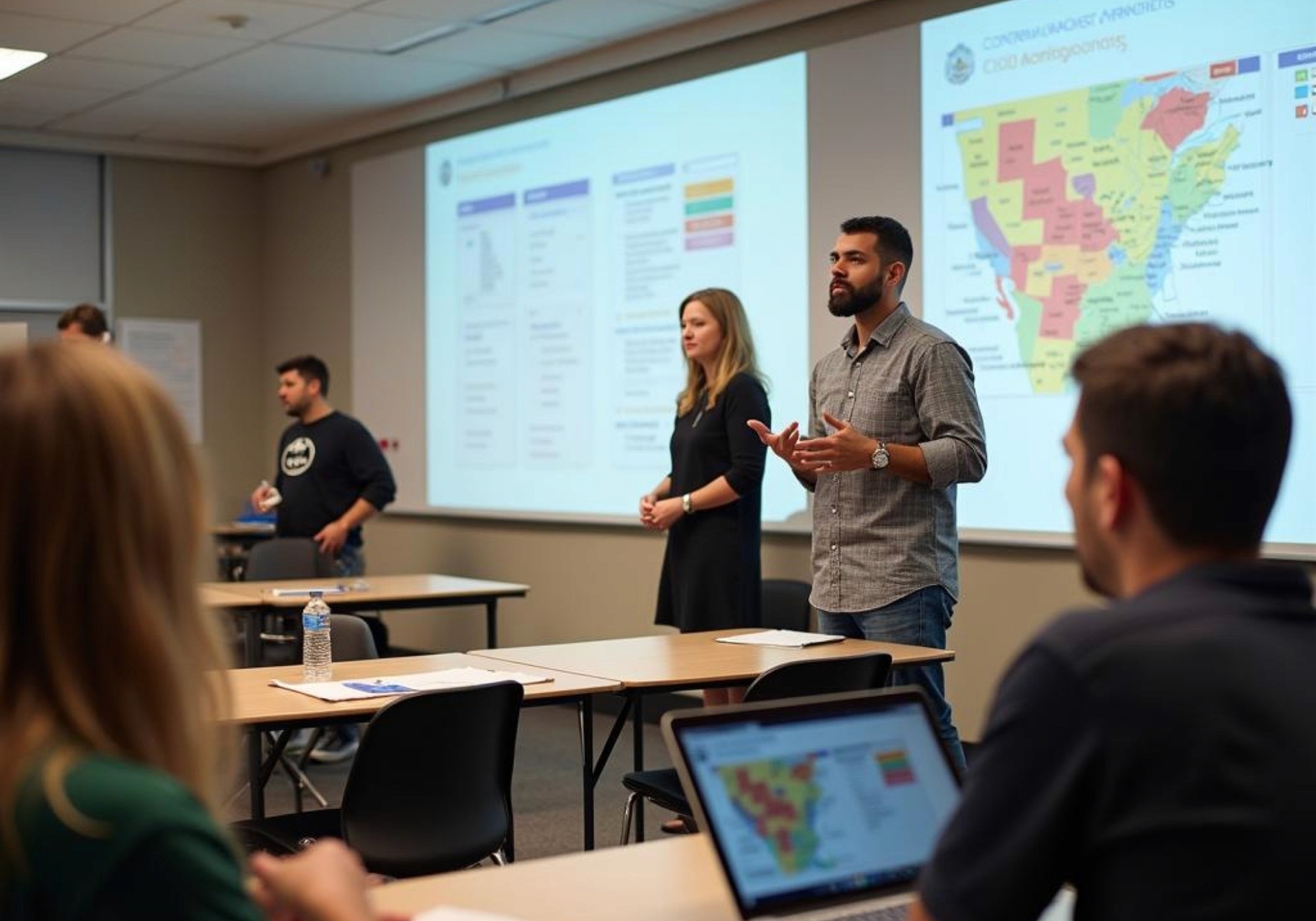
Challenges and Solutions in Project-Based Learning
Imagine this: You've just launched a new project-based learning (PBL) initiative in your classroom. Students buzz with excitement as you introduce the big idea. But a week in, enthusiasm wanes, deadlines are missed, and teamwork feels more like herding cats. Sound familiar? You're not alone! While PBL has tons of benefits, it also comes with its fair share of challenges. The good news? Every challenge has a solution. Let’s dive into some of the most common hurdles teachers face and how to tackle them head-on.
Understanding the Common Challenges
1. Time Management Struggles
One of the biggest issues with PBL is managing time effectively—for both students and teachers. Projects can easily spiral out of control without clear timelines, leaving students overwhelmed and teachers scrambling to fit everything into an already-packed curriculum.
2. Uneven Participation in Groups
You’ve probably seen this before: one or two students carry the weight of the group while others contribute minimally, leading to frustration and resentment. Collaborative projects can often shine a spotlight on the imbalance in effort.
3. Lack of Engagement
Not every student will find the project topic engaging. Some may struggle to see the relevance of the project, leading to disinterest and minimal effort.
4. Assessment Complexity
Let’s be real—grading a project is way tougher than scoring a multiple-choice test. How do you fairly assess creativity, teamwork, research, and the final product all at once?
5. Access to Resources
Some students might lack access to the tools and resources needed for successful project completion, like technology, materials, or appropriate research options. This can create an uneven playing field.
Practical Solutions to Overcome the Challenges
1. Mastering Time with Structure
Time management doesn’t have to be a nightmare. Here’s how you can stay in control:
Break it Down: Divide the project into smaller, bite-sized tasks with specific deadlines. For instance, “research is due by Friday, first draft by next Tuesday.”
Check-Ins: Schedule quick progress check-ins to ensure students are on track. Think of it as “maintenance mode” for your projects.
Pro Tip: Use a project calendar visible to everyone. Google Calendar or a classroom whiteboard can work wonders.
2. Cultivating Balanced Group Work
To ensure everyone pulls their weight:
Assign Roles: Define roles within groups—like researcher, writer, or presenter. When students have clear responsibilities, it's harder for anyone to slack off.
Self and Peer Evaluations: Let students assess their own contributions and those of their peers. It creates accountability and promotes fair participation.
Quick fix for simmering tensions: Rotate roles mid-project to let everyone try different tasks. Sometimes the “silent one” shines as the presenter!
3. Boosting Engagement
Not every student will connect to a generic project topic—so add a personal touch:
Let Them Choose: Give students some freedom to pick topics or personalize their approach. A World War II project can range from battles to women’s roles to propaganda posters.
Emphasize Real-World Impact: Highlight how the skills they’re learning apply to real life. “This brainstorming process? You might use it in your future dream job.”
Bonus Tip: Bring elements of competition or rewards (think: mini prizes, class recognition) to spark motivation.
4. Simplifying Assessment with Clear Rubrics
Evaluation doesn’t have to be overwhelming:
Use a Rubric: Create a detailed rubric that breaks down specific criteria like research depth, creativity, teamwork, and presentation quality. Share it with students upfront so they know exactly how they’ll be graded.
Include Reflection: Ask students to write a short reflection about their learning process. It’s not just informative; it also gives you insight into skills that might not appear in the final product.
5. Bridging Resource Gaps
When resources are a barrier:
Get Creative: Leverage free online tools (hello, Google Docs, Padlet, and Canva!) and encourage students to use everyday materials. A poster made from old magazines can turn out just as impressive as one designed digitally.
Community Connections: Collaborate with parents, local businesses, or libraries to secure donations or partnerships. Their support can make a big difference.
Challenges in project-based learning can feel daunting at first. But with some clever planning and a pinch of flexibility, they’re entirely manageable. The truth is, each roadblock is just another learning opportunity—for both you and your students. And remember, the payoff is worth it: engaged, empowered learners creating work they’re proud of. Isn’t that what every teacher dreams of? Your next project could be the one that transforms your classroom.
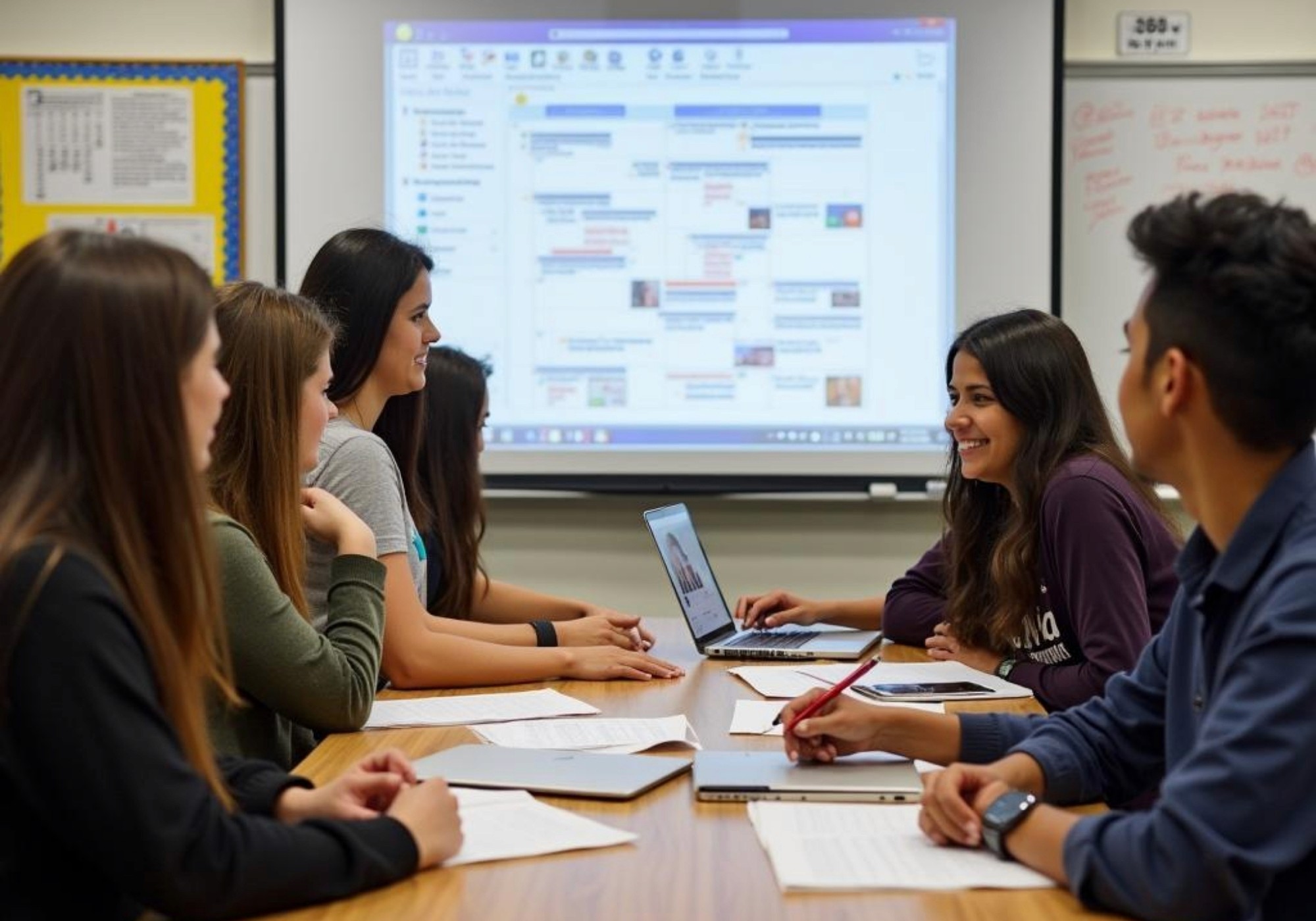
Real-World Examples of Project-Based Learning
What if I told you that students could make a genuine impact on their communities while learning math, science, or history? That’s the beauty of project-based learning (PBL). It’s not just about completing worksheets—students take on real, meaningful challenges. Let’s dive into a few examples that showcase just how powerful PBL can be in action.
Building a Community Garden
Imagine this: A group of middle schoolers wants to tackle the lack of green space in their neighborhood. They turn this idea into a semester-long project. Here's what it looks like:
Science: Students learn about soil types, plant biology, and the environmental benefits of green spaces.
Math: They calculate the budget for seeds, tools, and irrigation systems, track expenses, and measure plots for planting.
Social Studies: They research the history of urban development in their area and how it impacted green spaces.
Language Arts: They write persuasive letters to local government officials requesting permission to use a vacant lot.
By the end of the project, these students haven’t just learned—they’ve also created a lasting space for their community to enjoy.
Designing Solutions to Local Problems
Let’s shift gears to a high school. Students in an engineering class notice a major issue in their town: litter piling up in public parks. They decide to design a solution. Here’s what happens next:
They brainstorm ideas—recycling-friendly trash bins that are harder for animals to rummage through.
After researching innovative waste management solutions, they build prototypes using 3D printing.
Once complete, they approach the city council with their designs, learning valuable communication and presentation skills along the way.
Not only do they master engineering concepts, but they also feel empowered as young problem-solvers in their community. Some of them even get inspired to pursue careers in sustainability or civic planning.
Running a Historical Simulation
History buffs, this one’s for you! Take a fifth-grade class diving into the American Revolution. Instead of reading about it passively, they live it—kind of.
Students work in groups to run a mock town meeting where they debate whether to join the revolutionary cause.
They create propaganda posters, write speeches, and even dress in period clothing to make it feel authentic.
Their teacher acts as a “town official,” guiding discussions and steering students toward deeper thinking about the motivations and consequences of their choices.
Through this immersive experience, students develop critical thinking, public speaking, and empathy for historical figures. Plus, how fun is it to argue about tea taxes in front of your classmates?
Creating a Documentary
Lights, camera, learning! In another example, students in a high school media class might create a documentary highlighting an issue they care about—say, the impact of climate change on their local environment.
Step 1: They conduct research, including interviews with local scientists, environmental activists, and community members.
Step 2: They shoot and edit footage, learning technical skills like video production and storytelling.
Step 3: They present the finished product at a community event, raising awareness and inspiring action.
Not only do they gain valuable media skills, but they also leave a lasting impact on their audience. Talk about learning with purpose!
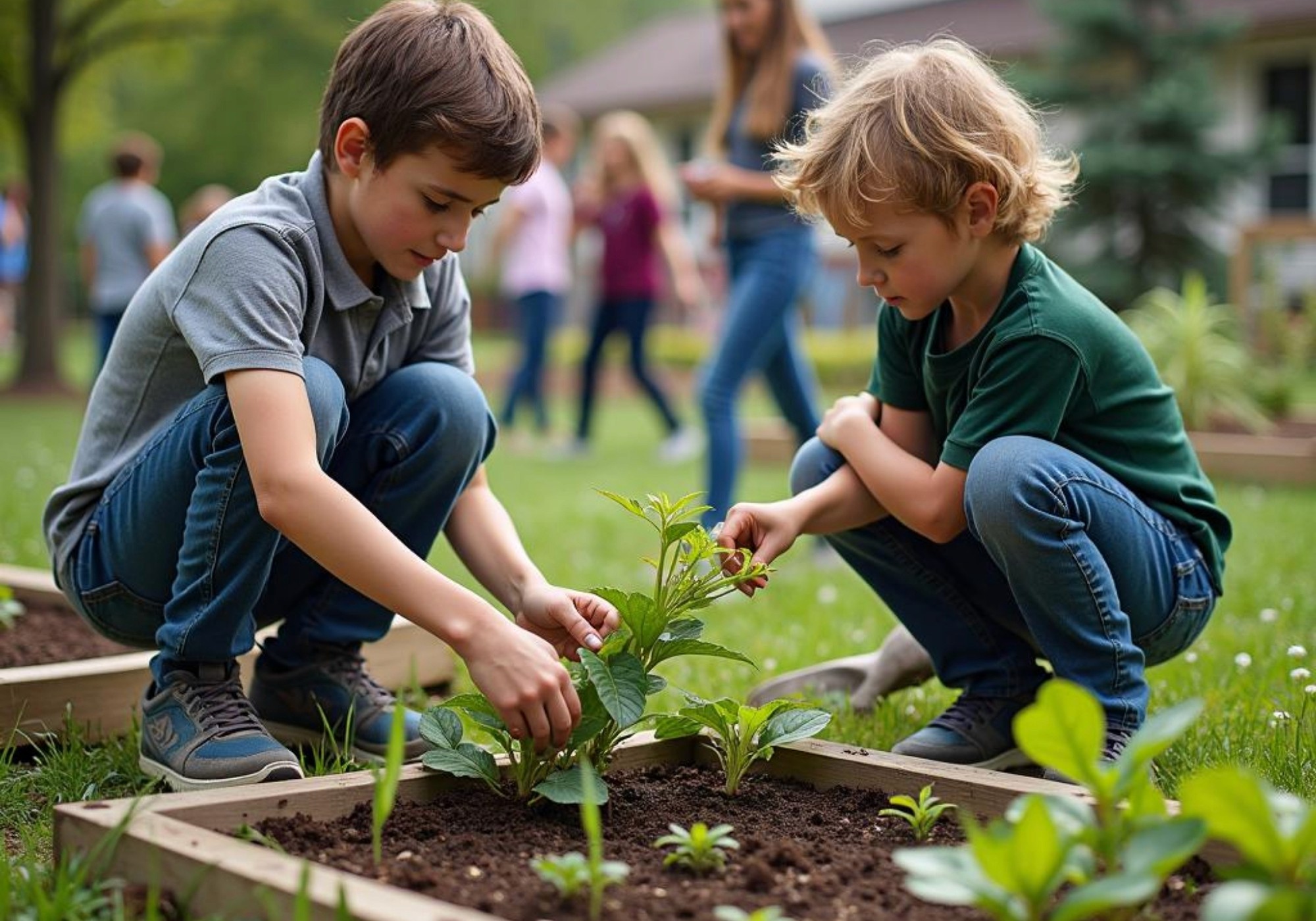
Why These Examples Matter
Every single one of these projects has real-world relevance. Instead of asking, “When will I ever use this?” students see the immediate value of their learning. They gain ownership of their education, build confidence, and, most importantly, realize they can make a difference in the world—even as kids.
So, if you ever get the chance to lead or participate in a project-based learning experience, dive in headfirst. Who knows? It could be the most memorable and meaningful thing you’ve ever worked on.
Introduction to Project-Based Learning
What Is Project-Based Learning?
At its core, Project-Based Learning is an educational approach where students learn by actively exploring real-world challenges and questions. They work on projects that are not hypothetical but grounded in authentic problems, producing a tangible result or product at the end. Think of it as learning by doing, with deeply rooted connections to real-world applications.
For instance, rather than reading about clean energy in textbooks, PBL encourages students to design a small solar-powered device or draft a proposal for improving energy efficiency in their school. The idea is to blend academic knowledge with critical thinking, creativity, and collaboration to tackle practical issues.
Why Has PBL Become So Popular?
Education as we know it is changing. Employers today value skills like teamwork, problem-solving, and adaptability just as much (if not more) than memorized knowledge. Project-Based Learning naturally emphasizes these skills. Plus, let’s admit it—students are way more engaged when they’re working on something they care about!
A great example is a high school math class learning geometry through the construction of model bridges. Instead of simply solving equations, students measure, calculate, and evaluate structural integrity—all while applying math concepts to solve real problems. And surprise, they might even find math... fun?
What Does a PBL Classroom Look Like?
A PBL classroom might look a little chaotic at first glance—but that’s usually a good sign! You’ll see students huddled in groups, brainstorming, building prototypes, or even debating solutions. The teacher isn't lecturing at the front of the room. Instead, they’re acting as a guide, moving from group to group to facilitate learning.
Here’s what you'll commonly observe:
Collaboration: Teams of students sharing ideas and distributing tasks.
Inquiry: Lots of questions flying around—and not just from the teacher!
Creativity: Students using tools, technology, and their imagination to solve problems.
Presentation: Everyone is prepping to showcase their work, whether through posters, digital presentations, or physical projects.
Breaking Misconceptions About PBL
“But wait,” you might ask, “isn’t this just group work rebranded?” Not at all. While teamwork is often involved, PBL is far more structured and purposeful. Everyone in a PBL classroom is working toward a concrete goal, driven by a guiding question or challenge.
Another common myth? That PBL is just for artsy or tech-savvy students. In truth, PBL works beautifully across all subjects—from science and technology to literature and history. For example, Shakespeare's plays could come to life through a student-led production or a modern reinterpretation in short films.
A Taste of What’s Ahead
Ready to dive deeper? In the next sections, we’ll explore why PBL is such a game-changer and how you can implement it step-by-step. Spoiler alert: it’s not just about projects—it’s about fostering skills that stick with students for life! Keep reading to learn about the many benefits of this dynamic teaching approach.

Benefits of Project-Based Learning
Have you ever tackled a hands-on project and realized you learned so much in the process—without even noticing? That’s exactly the magic of project-based learning (PBL). Unlike traditional teaching methods where students memorize facts, PBL puts the focus on doing. By actively engaging in meaningful projects, students gain more than just knowledge. Let’s dive into the benefits of PBL and see why it’s changing classrooms for the better!
Promotes Deeper Understanding
Facts are great, but truly understanding something takes more than just memorization. PBL lets students explore topics in-depth through real-world applications. For instance, instead of learning math equations in isolation, students might design a budget for a charity event or build a model bridge. By working through a project, they see how abstract concepts fit into everyday life.
This hands-on approach also encourages students to ask why and _how_—two questions that are at the heart of genuine learning.
Builds Practical, Real-World Skills
Let’s face it: knowing the capital of France is helpful, but knowing how to collaborate with others or solve complex problems is invaluable. PBL emphasizes skills that go beyond the classroom, including:
Critical thinking: Finding solutions to problems with no clear "right answer."
Collaboration: Working as part of a team, even when disagreements arise.
Time management: Juggling deadlines while keeping quality top-notch.
Communication: Presenting ideas clearly, whether through writing, speaking, or visuals.
For example, a team project to create an app doesn’t just teach coding—it forces students to work together under pressure and present their final product effectively. Sounds like something they’ll need in the real world, right?
Boosts Engagement and Motivation
Have you ever been so engrossed in a task that you lost track of time? That’s the kind of engagement PBL fosters. By giving students meaningful, real-world challenges, PBL makes learning fun and relevant. Suddenly, school isn’t just about grades; it’s about solving problems that actually matter.
For example:
Designing a water filtration system to help areas in crisis.
Building bee gardens to support local ecosystems.
Investigating the impact of a recent law on their community.
Such projects aren’t just engaging—they also let students see the impact of their work, which naturally fuels motivation.
Encourages Creativity and Innovation
PBL celebrates creative thinking. Because projects often don’t have a single correct answer, students are free to brainstorm, test, and explore different approaches. They might paint murals to communicate history lessons or write scripts to dramatize scientific concepts.
The beauty here? They learn it’s okay to fail. In fact, failure often sparks the best ideas. By the end of a project, students gain not only knowledge but confidence in their ability to innovate.
Builds Independence and Responsibility
PBL shifts the focus from the teacher to the student. While educators guide the process, students take ownership of their learning. They decide how to structure their projects, tackle obstacles, and manage their resources.
Imagine this: A group of students runs a mock city council debate addressing local environmental concerns. They’re responsible for researching policies, assigning roles, and preparing arguments. The teacher acts as a mentor, but the success of the project ultimately lies in the students’ hands. This level of independence is empowering—and prepares them to be self-motivated learners in the future.
Makes Learning Memorable
Remember those boring lectures you zoned out during in school? Probably not. But PBL flips the script. Because students are deeply involved in their learning, they retain the knowledge longer. Plus, the skills and experiences they gain stick with them far beyond a final exam.
Think about it: A student who creates a campaign to raise awareness about food waste isn’t going to forget it anytime soon. And neither will the lessons they learned along the way!
From hands-on exploration to life-changing skills, the benefits of project-based learning are undeniable. Best of all? It makes learning exciting—not just for students, but for educators as well. Ready to learn how to implement it? Let’s roll up our sleeves and dive into the next steps!

Key Principles of Project-Based Learning
Imagine walking into a classroom where students aren't quietly copying notes or staring at textbooks. Instead, they're building a model of a sustainable city, filming a documentary about local history, or designing a website to solve a real-world problem. That’s project-based learning (PBL) in action! But what makes PBL truly effective? It all starts with a few foundational principles.
1. Centered Around Real-World Problems
PBL doesn’t ask students to memorize facts for a test. Instead, it challenges them to tackle real-world problems or questions that actually matter. When a project feels relevant, students naturally become more engaged.
Example: Rather than studying abstract math concepts, students might be tasked with planning a new community park, using geometry to design layouts and calculate areas.
Why It Works: This real-world connection ignites curiosity and encourages students to see the value in what they're learning. Suddenly, those math equations aren’t just numbers—they’re tools for creating something meaningful.
2. Emphasis on Inquiry, Not Answers
In PBL, it’s not about giving students the "right" answer; it’s about teaching them to ask the right questions. Inquiry is at the heart of every project. Students explore, research, and think critically to arrive at solutions.
Tips for Teachers:
Start with an open-ended driving question (e.g., "How can we reduce food waste in our school cafeteria?").
Allow students to investigate and draw conclusions rather than handing them a step-by-step guide.
This principle fosters creativity, independent thinking, and deeper understanding. Plus, it mirrors how problem-solving happens in the real world—you rarely get a tidy, pre-packaged solution!
3. Collaboration is Key
Let’s be honest—teamwork doesn’t always come naturally, and anyone who’s struggled through a group project knows this. But in PBL, collaboration is a superpower. Students learn to divide tasks, share ideas, and navigate conflicts, all while working toward a common goal.
Why This Matters: Employers consistently rank teamwork as one of the most important skills for future professionals. PBL gives students a head start by building these skills early.
Fun Fact: Research shows that learning in cooperative groups improves both academic achievement and social-emotional development.
Remember—magic isn’t made from perfect teams; it’s made from learning how to work together, even when personalities clash or ideas differ.
4. Reflection Happens at Every Step
Ever hear the saying, "You don’t learn from experiences; you learn from reflecting on them"? PBL takes this to heart. Students are encouraged to pause, reflect, and revise their work throughout the process.
How It Works:
After each milestone, students review what they’ve done. Did their solution work? What could they do differently?
Teachers guide this reflection by asking probing questions like, “What challenges did you face?” or “How did your thinking evolve?”
Reflection transforms mistakes into learning opportunities. It also helps students develop a growth mindset, where they value progress over perfection.
5. Public Products Build Accountability
One of the coolest aspects of PBL? Students don’t just turn their projects in—they share them with the world. Whether it’s presenting to peers, parents, or even community leaders, this public aspect adds a layer of accountability.
Why It’s Powerful: Knowing their work will be seen sparks intrinsic motivation. Plus, presenting to an authentic audience makes students take their work seriously, and it builds confidence.
Example: A group designing an app might pitch their idea to local business owners, receiving feedback that feels very "real-world."
At its core, PBL flips the traditional teaching model on its head. Learning becomes active, messy, and deeply engaging. When students tackle real problems, foster inquiry, collaborate, reflect, and share their work with others, they don’t just learn content—they develop skills that prepare them for life.
And here’s the secret sauce: these principles aren’t just academic buzzwords. They’re what make students say, “Wow, this is the coolest thing I’ve ever done!” Ready to dive into the world of PBL yourself? Keep these principles close, and let the creativity flow!

Steps to Implement Project-Based Learning
Imagine this: Your students are buzzing with excitement, collaborating on a project that ties math, writing, and science together, while addressing a real-world challenge. That’s the magic of project-based learning (PBL). But how do you actually make it happen—without feeling overwhelmed? Don’t worry; here’s a step-by-step breakdown to help you implement PBL like a pro.
1. Identify a Driving Question or Problem
Every great PBL activity starts with a compelling, open-ended question or real-world problem. Think of it as the anchor for the entire project. It should be challenging, relevant, and spark curiosity.
Make it meaningful: Instead of “How do we reduce our school’s energy use?” try something engaging like “Can we make our school the greenest in the district?”
Connect to real life: For example, a driving question for younger students might be, "How can we design a playground that everyone can enjoy?” For older students, it could be, "What solutions could help reduce homelessness in our city?"
Pro tip: Test your question by asking yourself, “Would I want to tackle this?”
2. Plan with Purpose
Once you have your driving question, it’s time to map out the journey. A detailed plan ensures students stay on track while giving them the freedom to explore creatively.
Break down the project: Divide it into manageable chunks or milestones to make the process less overwhelming.
Outline goals: Determine what skills and concepts you want students to master by the end (e.g., teamwork, critical thinking, or understanding ecosystems).
Pick your resources: Will students need access to certain books, internet tools, or even community members? Get these ready in advance.
3. Launch with a Hook
PBL works best when students are genuinely excited to dive in! Kick things off with a memorable activity or hook to introduce the project.
Show, don’t tell: Share a video, bring in a guest speaker, or organize a field trip to fire up curiosity. For example, showing a documentary clip on ocean pollution can ignite passion for tackling environmental problems.
Make it interactive: Pose a hands-on challenge to spark excitement. If designing a garden, bring in unusual plants or gardening tools for students to explore.
4. Facilitate Collaboration and Exploration
Now it’s time for students to roll up their sleeves. While group work is central to PBL, guiding them effectively is equally important.
Create diverse teams: Mix skills and personalities to promote collaboration. Let students assign roles like team leader, researcher, or designer.
Encourage research: Students should dive into books, consult experts, or maybe even conduct surveys. For example, middle schoolers designing a community park might interview local residents for ideas.
Step back (but stay close): Your role becomes more of a guide than a lecturer. Monitor groups, answer questions, and challenge them to dive deeper, but avoid micromanaging.
5. Emphasize Reflection Throughout
Reflection isn’t just the cherry on top—it’s baked into the PBL process. It helps students assess their progress and think critically about their learning.
Check in regularly: Hold quick “stand-up meetings” where groups update the class on their progress.
Ask reflection questions: What’s working? What’s challenging? What’s surprising you so far? These kinds of questions keep students thinking dynamically.
6. Share and Celebrate the Final Product
The big moment is here: showcasing the results! This phase of PBL is all about sharing the outcome of students' hard work with a genuine audience.
Go beyond the classroom: Instead of presenting strictly to their peers, invite parents, community members, or even post presentations on a school blog or social media.
Use creative formats: Students might write a report, build a prototype, create a video, host a fundraiser, or perform a skit. For example, high schoolers addressing local hunger could host a food drive as part of their project.
Project-based learning may seem like a challenge to plan, but following these key steps turns it into a rewarding adventure for both students and teachers. So, are you ready to watch your classroom come alive with creativity and purpose? Trust me—it’s worth it. Now, let’s tackle those potential hurdles (you’ve got this!).

Assessment Strategies for Project-Based Learning
Imagine a classroom where students are building a model of their city’s downtown, crafting solutions to local traffic problems, or creating documentaries about climate change. Amazing, right? But then comes the million-dollar question: how do you actually assess all of this? Traditional quizzes or multiple-choice tests can’t capture the depth or creativity of these kinds of projects. That’s where tailored assessment strategies for Project-Based Learning (PBL) come into play.
Why PBL Assessment Is Different
In PBL, it’s not just about the final product—it’s about the journey. You’re assessing how students think, collaborate, and problem-solve along the way. This means your assessment needs to go beyond grading one right answer. It needs to capture skills like critical thinking, communication, and creativity.
The challenge? Balancing structure and flexibility. You want to evaluate their work rigorously but also celebrate the messy, nonlinear magic of real-world projects.
So let’s dive into how you can make this happen.
1. Use Rubrics for Clarity and Consistency
Rubrics are your best friend in PBL assessment. They set clear expectations for students while giving you a solid tool to evaluate their work fairly.
Here’s what a good PBL rubric should cover:
Content Mastery: Did the students demonstrate their understanding of key concepts?
Application of Knowledge: Were they able to apply what they learned to solve the problem?
Collaboration: How well did they work as a team?
Creativity & Innovation: Did their solution show originality?
Presentation Skills: How effectively did they communicate their ideas?
For example, if students are designing a water filtration system, your rubric might score them on how well they apply principles of science, their teamwork skills during the prototyping phase, and their ability to present their findings to an audience.
2. Incorporate Self-Assessment
Here’s a secret: students are often their own toughest critics. Self-assessment encourages them to reflect on their work and learning process.
Ask questions like:
What went well during your project?
What challenges did you face, and how did you overcome them?
If you could do something differently, what would it be?
Pro tip: Combine self-assessment with a reflection journal. Journals are a great way for students to track their progress, brainstorm ideas, and share insights as they go. You might be surprised at how much this step sharpens their thinking!
3. Highlight Peer Feedback
Ever noticed how students tend to listen to constructive criticism from their peers more than their teachers? Peer feedback is a fantastic way to involve students in the assessment process, and it can deepen collaboration.
Set clear ground rules—like being respectful and offering specific, actionable suggestions. For instance:
“I think your prototype is really creative, but have you considered testing it with different materials?”
Encourage students to give and receive peer feedback during checkpoints in the project timeline, not just at the end.
4. Focus on Process, Not Just Product
The beauty of PBL is that the process is just as important as the end result—maybe even more so. To assess this:
Hold regular check-ins to review progress.
Use formative assessments like group discussions, exit tickets, or quick presentations of ideas.
For example, if students are planning a community garden, you might evaluate their research, teamwork, and planning before they've even planted a single seed.
5. Celebrate Public Presentations
Here’s where the real world meets the classroom. A hallmark of PBL is asking students to present their findings to an authentic audience. This can be fellow classmates, parents, or even community members.
Assess on criteria like:
How well they explained their ideas.
Whether they addressed audience questions.
Their professionalism and engagement during the presentation.
Not only does this give students a taste of real-world accountability, but it also builds their confidence. Plus, it’s a great way for you to evaluate their learning in action.
Making Assessment Feel Empowering
The right PBL assessment strategies don’t just measure learning—they enhance it. By using tools like rubrics, self-assessments, and public presentations, you’ll make students feel more in control of their own growth.
And the next time you see their eyes light up while presenting a project or explaining how they cracked a tough problem, you’ll know you’re doing it right.
Now, ready to tackle those challenges that come with implementing PBL? Stay tuned—they’re not as scary as they seem!

Challenges and Solutions in Project-Based Learning
Imagine this: You've just launched a new project-based learning (PBL) initiative in your classroom. Students buzz with excitement as you introduce the big idea. But a week in, enthusiasm wanes, deadlines are missed, and teamwork feels more like herding cats. Sound familiar? You're not alone! While PBL has tons of benefits, it also comes with its fair share of challenges. The good news? Every challenge has a solution. Let’s dive into some of the most common hurdles teachers face and how to tackle them head-on.
Understanding the Common Challenges
1. Time Management Struggles
One of the biggest issues with PBL is managing time effectively—for both students and teachers. Projects can easily spiral out of control without clear timelines, leaving students overwhelmed and teachers scrambling to fit everything into an already-packed curriculum.
2. Uneven Participation in Groups
You’ve probably seen this before: one or two students carry the weight of the group while others contribute minimally, leading to frustration and resentment. Collaborative projects can often shine a spotlight on the imbalance in effort.
3. Lack of Engagement
Not every student will find the project topic engaging. Some may struggle to see the relevance of the project, leading to disinterest and minimal effort.
4. Assessment Complexity
Let’s be real—grading a project is way tougher than scoring a multiple-choice test. How do you fairly assess creativity, teamwork, research, and the final product all at once?
5. Access to Resources
Some students might lack access to the tools and resources needed for successful project completion, like technology, materials, or appropriate research options. This can create an uneven playing field.
Practical Solutions to Overcome the Challenges
1. Mastering Time with Structure
Time management doesn’t have to be a nightmare. Here’s how you can stay in control:
Break it Down: Divide the project into smaller, bite-sized tasks with specific deadlines. For instance, “research is due by Friday, first draft by next Tuesday.”
Check-Ins: Schedule quick progress check-ins to ensure students are on track. Think of it as “maintenance mode” for your projects.
Pro Tip: Use a project calendar visible to everyone. Google Calendar or a classroom whiteboard can work wonders.
2. Cultivating Balanced Group Work
To ensure everyone pulls their weight:
Assign Roles: Define roles within groups—like researcher, writer, or presenter. When students have clear responsibilities, it's harder for anyone to slack off.
Self and Peer Evaluations: Let students assess their own contributions and those of their peers. It creates accountability and promotes fair participation.
Quick fix for simmering tensions: Rotate roles mid-project to let everyone try different tasks. Sometimes the “silent one” shines as the presenter!
3. Boosting Engagement
Not every student will connect to a generic project topic—so add a personal touch:
Let Them Choose: Give students some freedom to pick topics or personalize their approach. A World War II project can range from battles to women’s roles to propaganda posters.
Emphasize Real-World Impact: Highlight how the skills they’re learning apply to real life. “This brainstorming process? You might use it in your future dream job.”
Bonus Tip: Bring elements of competition or rewards (think: mini prizes, class recognition) to spark motivation.
4. Simplifying Assessment with Clear Rubrics
Evaluation doesn’t have to be overwhelming:
Use a Rubric: Create a detailed rubric that breaks down specific criteria like research depth, creativity, teamwork, and presentation quality. Share it with students upfront so they know exactly how they’ll be graded.
Include Reflection: Ask students to write a short reflection about their learning process. It’s not just informative; it also gives you insight into skills that might not appear in the final product.
5. Bridging Resource Gaps
When resources are a barrier:
Get Creative: Leverage free online tools (hello, Google Docs, Padlet, and Canva!) and encourage students to use everyday materials. A poster made from old magazines can turn out just as impressive as one designed digitally.
Community Connections: Collaborate with parents, local businesses, or libraries to secure donations or partnerships. Their support can make a big difference.
Challenges in project-based learning can feel daunting at first. But with some clever planning and a pinch of flexibility, they’re entirely manageable. The truth is, each roadblock is just another learning opportunity—for both you and your students. And remember, the payoff is worth it: engaged, empowered learners creating work they’re proud of. Isn’t that what every teacher dreams of? Your next project could be the one that transforms your classroom.

Real-World Examples of Project-Based Learning
What if I told you that students could make a genuine impact on their communities while learning math, science, or history? That’s the beauty of project-based learning (PBL). It’s not just about completing worksheets—students take on real, meaningful challenges. Let’s dive into a few examples that showcase just how powerful PBL can be in action.
Building a Community Garden
Imagine this: A group of middle schoolers wants to tackle the lack of green space in their neighborhood. They turn this idea into a semester-long project. Here's what it looks like:
Science: Students learn about soil types, plant biology, and the environmental benefits of green spaces.
Math: They calculate the budget for seeds, tools, and irrigation systems, track expenses, and measure plots for planting.
Social Studies: They research the history of urban development in their area and how it impacted green spaces.
Language Arts: They write persuasive letters to local government officials requesting permission to use a vacant lot.
By the end of the project, these students haven’t just learned—they’ve also created a lasting space for their community to enjoy.
Designing Solutions to Local Problems
Let’s shift gears to a high school. Students in an engineering class notice a major issue in their town: litter piling up in public parks. They decide to design a solution. Here’s what happens next:
They brainstorm ideas—recycling-friendly trash bins that are harder for animals to rummage through.
After researching innovative waste management solutions, they build prototypes using 3D printing.
Once complete, they approach the city council with their designs, learning valuable communication and presentation skills along the way.
Not only do they master engineering concepts, but they also feel empowered as young problem-solvers in their community. Some of them even get inspired to pursue careers in sustainability or civic planning.
Running a Historical Simulation
History buffs, this one’s for you! Take a fifth-grade class diving into the American Revolution. Instead of reading about it passively, they live it—kind of.
Students work in groups to run a mock town meeting where they debate whether to join the revolutionary cause.
They create propaganda posters, write speeches, and even dress in period clothing to make it feel authentic.
Their teacher acts as a “town official,” guiding discussions and steering students toward deeper thinking about the motivations and consequences of their choices.
Through this immersive experience, students develop critical thinking, public speaking, and empathy for historical figures. Plus, how fun is it to argue about tea taxes in front of your classmates?
Creating a Documentary
Lights, camera, learning! In another example, students in a high school media class might create a documentary highlighting an issue they care about—say, the impact of climate change on their local environment.
Step 1: They conduct research, including interviews with local scientists, environmental activists, and community members.
Step 2: They shoot and edit footage, learning technical skills like video production and storytelling.
Step 3: They present the finished product at a community event, raising awareness and inspiring action.
Not only do they gain valuable media skills, but they also leave a lasting impact on their audience. Talk about learning with purpose!

Why These Examples Matter
Every single one of these projects has real-world relevance. Instead of asking, “When will I ever use this?” students see the immediate value of their learning. They gain ownership of their education, build confidence, and, most importantly, realize they can make a difference in the world—even as kids.
So, if you ever get the chance to lead or participate in a project-based learning experience, dive in headfirst. Who knows? It could be the most memorable and meaningful thing you’ve ever worked on.
Modern Teaching Handbook
Master modern education with the all-in-one resource for educators. Get your free copy now!

Modern Teaching Handbook
Master modern education with the all-in-one resource for educators. Get your free copy now!

Modern Teaching Handbook
Master modern education with the all-in-one resource for educators. Get your free copy now!

Table of Contents
Modern Teaching Handbook
Master modern education with the all-in-one resource for educators. Get your free copy now!
2024 Notion4Teachers. All Rights Reserved.
2024 Notion4Teachers. All Rights Reserved.
2024 Notion4Teachers. All Rights Reserved.
2024 Notion4Teachers. All Rights Reserved.
